How To Stop Weeds From Growing In Flower Beds & Keep Them Out
Mulching is the best way to prevent weeds. However, if you still have weeds in your garden, use a homemade or store-bought safe weed killer to get rid of them.
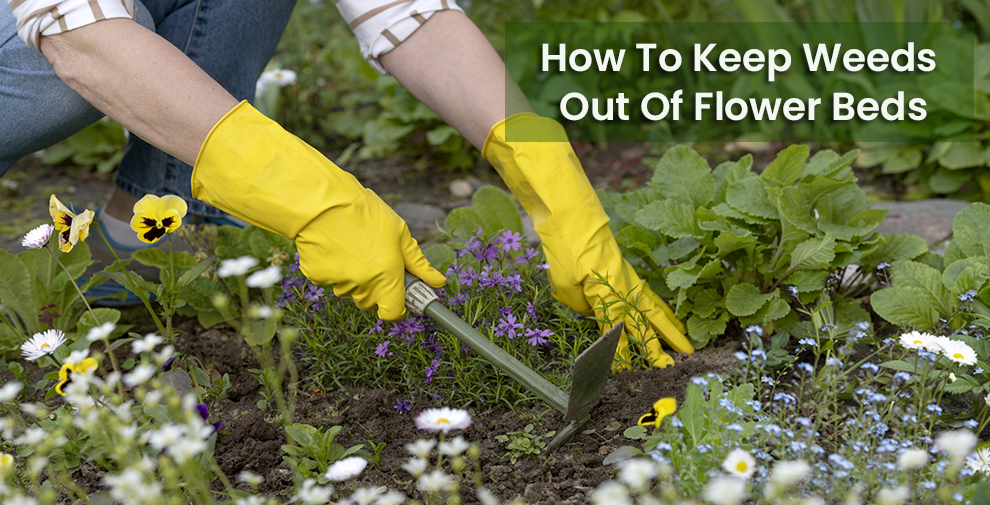
Are you frustrated and tired of pulling out weeds from your flowerbeds day in and day out?
You clean and clear out your garden bed only to watch the weeds emerging even stronger in mere days. It can be frustrating to see weeds thrive while the plants you have invested time, effort, and resources into struggle.
Weeds can cause more serious problems than simply making your flowerbeds look unsightly. So, how to keep weeds out of flower beds? Unfortunately, they can be a nuisance in the garden, as they can compete with desirable plants for nutrients, water, and sunlight.
When weeds grow in the same soil as other plants, they may also harbor pests and diseases that can spread to nearby plants.
The good news is that by implementing a few simple strategies, you can keep your flowerbeds relatively weed-free with minimal effort. This means less time spent pulling weeds and more time enjoying your beautiful garden.
By starting with good soil, using mulch, planting densely, using pre-emergent herbicides, and pulling weeds early and often, you can keep your flowerbeds looking their best and minimize the amount of time and effort you need to spend weeding throughout the growing season.
What Prevents Weeds In A Flower Bed But Doesn’t Kill Flowers?
Weeds are inevitable. No matter how carefully you plan, weeds will pop up in your garden. While the natural tendency would be to reach out for a chemical weed killer, pause and stop yourself.
There are several natural methods to kill weeds that won’t harm your flowers. Try these first:
A. Mulching
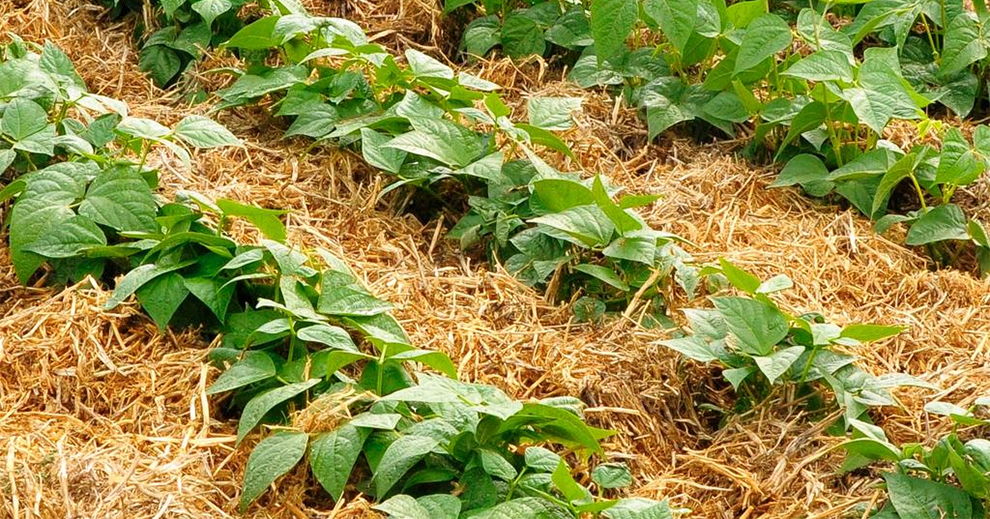
Any biodegradable product like newspapers or cardboard that covers and smothers weeds is mulch. Applying a 2 or 4-inch layer of mulch, such as bark chips, or shredded leaves, can help prevent weeds from sprouting by blocking out sunlight and creating a barrier for weed seeds to grow.
Mulch also helps to retain soil moisture and regulate soil temperature. Avoid applying mulch right up to the trunks of plants or trees as it can lead to disease or decay.
B. Putting Up A Barrier
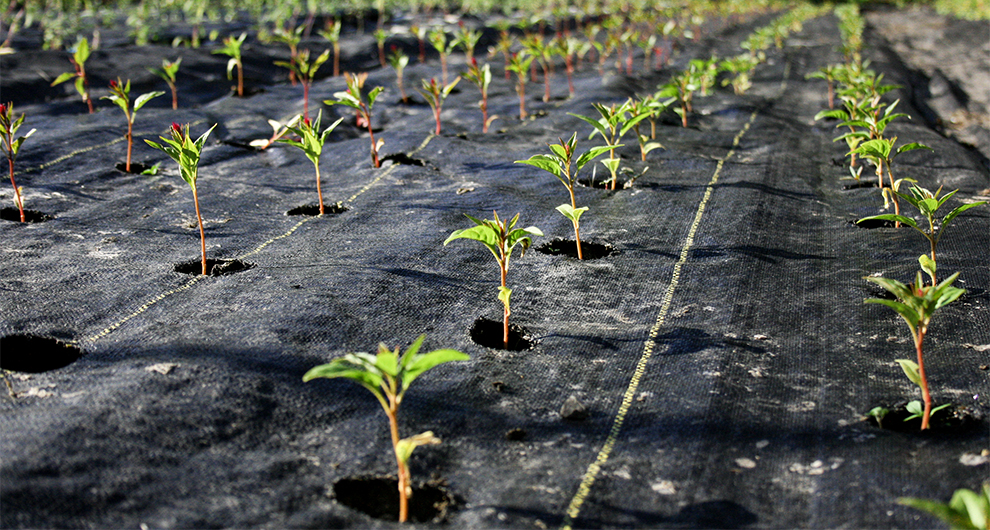
A weed barrier fabric can be placed on top of the soil before planting flowers, preventing weeds from growing up through the fabric.
This method can be effective in preventing weeds, but it’s important to note that the fabric can also prevent water and nutrients from reaching the soil, which may impact the health of the flowers.
C. Covering Your Flowers
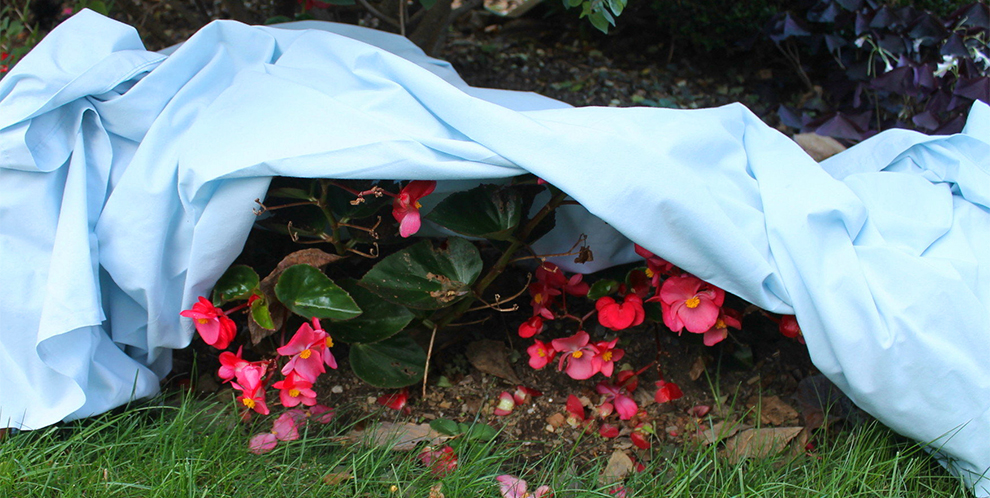
Covering your crops with stray, hay, or landscape fabric can also be an effective way to prevent weed growth, in addition to protecting them from pests and environmental factors.
When choosing a cover to prevent weed growth, it’s important to make sure that the cover is not too thick or heavy, as this can prevent air and water from reaching the plants.
Additionally, it’s important to monitor the crops regularly to make sure that the cover is not causing any damage or other issues.
D. Use Sterilized Packaged Soil and Focus On Watering The Exact Plant Location
Using sterilized packaged soil can help prevent the growth of weeds and other unwanted plants in your garden, as well as reduce the risk of soil-borne diseases and pests.
Sterilized soil is typically heated or treated in some way to kill off any potential contaminants.
In addition to using sterilized soil, focusing on watering the exact plant location can also help prevent weed growth. When watering, it’s important to aim the water directly at the base of the plant, rather than watering the surrounding area.
This helps to ensure that the water is reaching the roots of the plant, where it is needed most, and not encouraging weed growth in the surrounding area.
E. Plant Closely
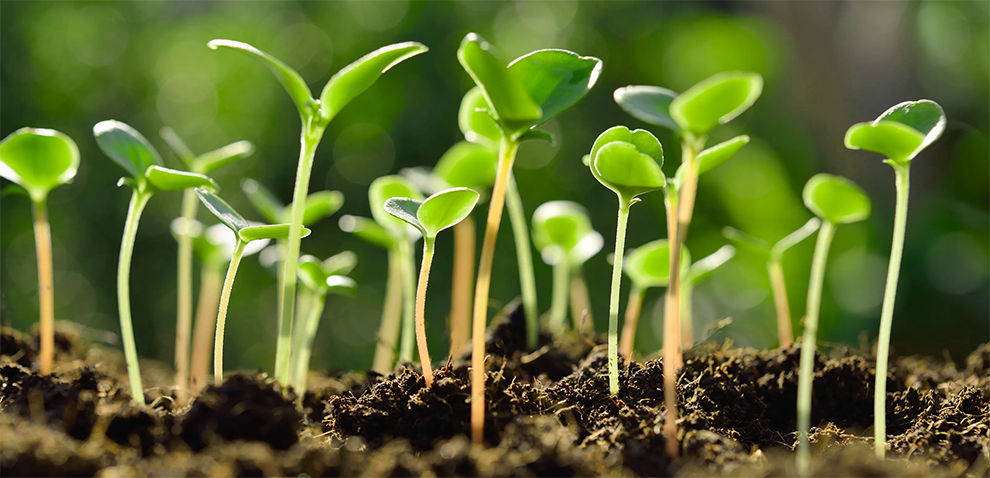
Planting closely can be an effective strategy to prevent the growth of weeds. When you plant your plants close together, they create a dense canopy that shades the soil beneath, making it difficult for weeds to grow.
Additionally, planting closely can reduce the amount of bare soil between plants, which is where many weed seeds germinate.
However, it’s important to note that planting too closely can also lead to competition for resources such as water, nutrients, and sunlight, which can negatively impact the growth of your plants.
It’s essential to research and understand the specific needs of the plants you’re growing and to plant them at the appropriate spacing for their species.
How To Stop Weeds From Growing In Flower Beds?
Are you looking for a few simple strategies to keep weeds out of your flower bed? Read on to win the battle against weeds.
Store-Bought Weed Killers
There are various types of store-bought weed killers that you can use in your garden:
1. Pre-emergent weed killers: Pre-emergent weed killers are applied to the soil before weed seeds have a chance to germinate. They work by inhibiting germination. Some examples of pre-emergent weed killers are:
- Preen Garden Weed Preventer
- Scotts Turf Builder Halts Crabgrass Preventer
- Hi-Yield Turf & Ornamental Weed and Grass Stopper
2. Post-emergent weed killers: Post-emergent weed killers are applied to weeds that have already emerged. They work by killing the weed’s foliage and root system. Some examples are:
When using store-bought weed killers, it’s important to follow the instructions carefully and use them according to the manufacturer’s recommendations. It’s also important to wear protective clothing and avoid spraying on windy days to prevent drift and accidental contact with desirable plants.
Additionally, it’s important to note that store-bought weed killers should be used sparingly as directed on the package.
How To Stop Weeds In Flower Beds With Homemade Weed-Killer Spray
You can also prepare a weed killer spray at home:
A. Vinegar, Salt, and Dish Soap
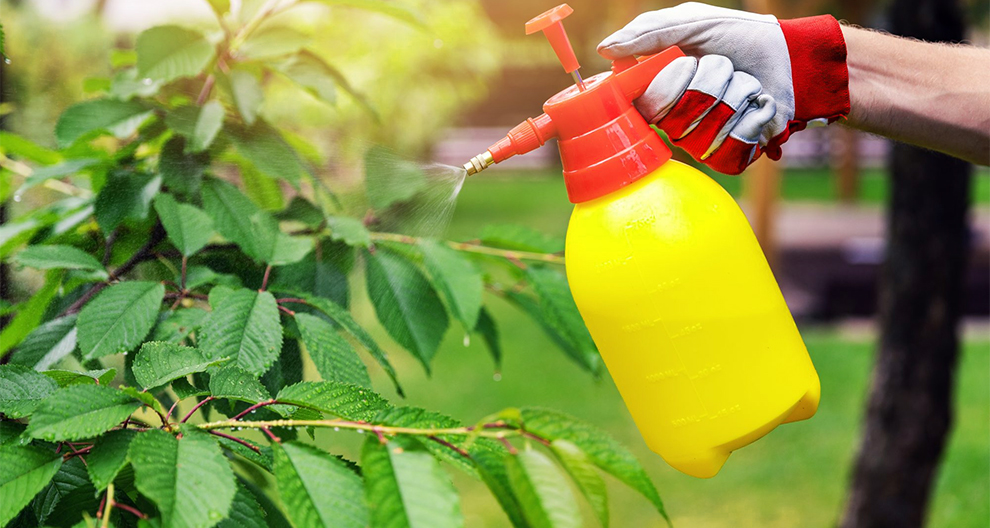
If you’re looking for a homemade weed killer spray, here’s a simple recipe that you can try:
- Combine 1 gallon of white vinegar and 1 cup of salt in a large container, stirring until the salt dissolves.
- Add 1 tablespoon of liquid dish soap to the vinegar and salt mixture, stirring gently to combine.
- Transfer the mixture to a spray bottle or garden sprayer.
- Apply the mixture directly to the weeds, being careful not to spray it on any desirable plants.
This homemade weed killer spray works by dehydrating the weeds, causing them to wither and die. It’s important to note that this spray is not selective and will kill any plants it comes into contact with, so be sure to use it only on weeds and avoid spraying it on any desirable plants.
Also, keep in mind that vinegar can be corrosive to some surfaces, so be careful when using it around outdoor furniture or other structures.
B. Bleach & Water
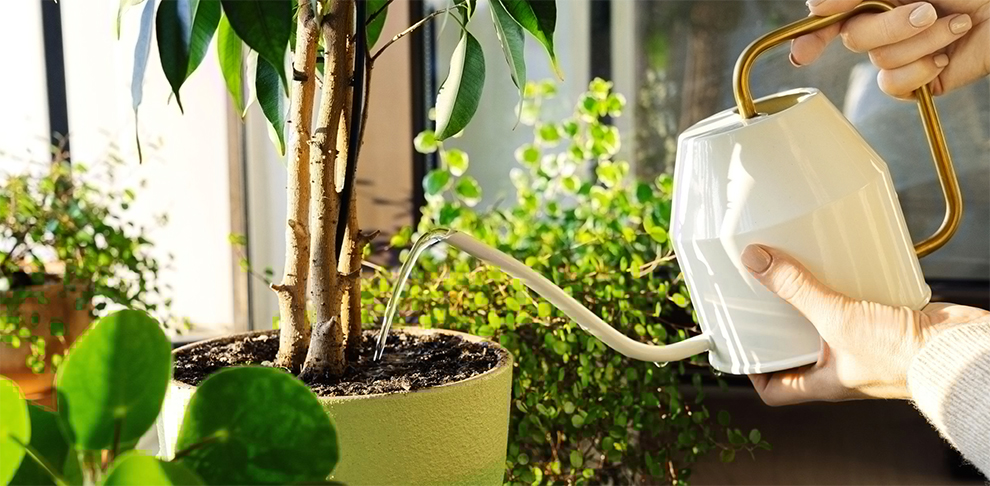
While bleach can be effective at killing weeds, it’s important to use caution when using it in the garden. Bleach is a strong chemical that can be harmful to plants and can also damage surrounding surfaces.
In general, it’s not recommended to use bleach as a weed killer in the garden and should be your last resort.
If you do decide to use bleach to kill weeds, here’s a simple recipe you can try:
- Mix 1 gallon of water and 1 cup of bleach in a large container.
- Transfer the mixture to a spray bottle or garden sprayer.
- Apply the mixture directly to the weeds, being careful not to spray it on any desirable plants or surfaces.
C. Boiling Water

Boiling water can be an effective way to kill weeds. The high temperature of the water can damage and kill the plants, including the roots, without the use of any chemicals.
Follow these steps:
- Boil a pot or kettle of water on your stove or an outdoor burner.
- Carefully carry the boiling water to the area where the weeds are growing. Be sure to wear protective clothing and avoid splashing the water on yourself or any nearby plants you want to keep.
- Slowly pour the boiling water over the weeds, making sure to saturate the entire plant and root system.
- Wait for the weeds to wilt and die. This may take a few days, and you may need to repeat the process for particularly stubborn weeds.
It’s important to note that boiling water can also damage or kill nearby plants that you want to keep, so use this method with caution and precision.
Additionally, this method is most effective for small, isolated weed patches and may not be practical for large areas of weeds.
Related: Types of Grass Fungus | Best Weed Killer for Dandelions
What Is The Cheapest Way To Keep Weeds Out Of The Garden?
The cheapest way to keep weeds out of a garden is through manual weeding. While it can be labor-intensive and require regular maintenance, it is a free and effective method that does not require any special equipment or chemicals.
Some other additional methods of weed removal include using vinegar solution, using salt, using a hoe or hand weeders, mulching, pulling out weeds when they are small, etc.
How Do Professional Landscapers Keep Weeds Out Of Flower Beds?
Professional landscapers use a variety of methods to keep weeds out of flower beds.
So, if you are wondering how to keep weeds out of garden bed like a professional, here is what you need to do. First of all, remove all visible weeds manually.
Professional landscapers will often use hand tools, such as hoes or hand weeders, to remove weeds from flower beds. This is a labor-intensive process, but it can be very effective, especially when combined with other methods like mulching or pre-emergent herbicides.
Once your garden is free of weeds, use a protective mulch to further deter weeds from growing back. Landscapers will typically apply a thick layer of mulch, around 2-3 inches, to the surface of the soil.
Professionals will often use a spade or edger to create a clean edge around the flower bed. This will ensure that the weeds out throughout the growing season.
Related Infestation: Scales on Plants | Aphids | Leafhoppers
Do Weeds Grow In Raised Garden Beds As Well? How To Tackle Them?
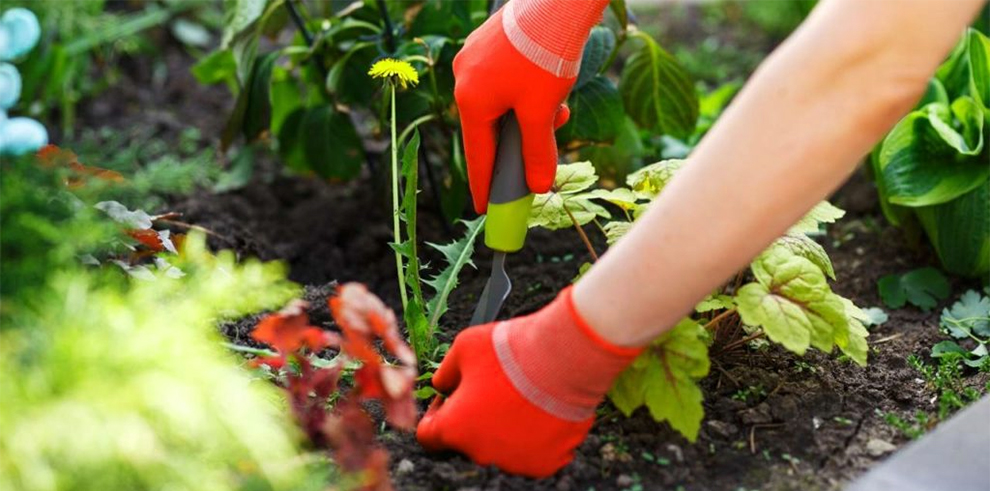
Yes, weeds can grow in raised garden beds just as they can in traditional garden beds. Here are some ways to tackle weeds in raised garden beds:
- Solarization: Solarization involves using the sun’s heat to kill weeds and weed seeds. To solarize a raised garden bed, cover the soil with clear plastic sheeting and secure the edges. Leave the plastic in place for several weeks during hot, sunny weather. The heat trapped under the plastic will kill the weeds and weed seeds.
- Companion planting: Planting certain plants in your raised garden bed can help deter weed growth. For example, planting herbs like basil or oregano can help repel weeds.
- Organic herbicides: There are organic herbicides available that can help control weed growth. Look for products that contain ingredients like vinegar or citric acid.
- Weed torches: A weed torch uses heat to kill weeds. It can be an effective tool for removing weeds in raised garden beds without disturbing the soil.
Remember to always be careful when using any herbicides or weed removal tools in your raised garden bed. Make sure to follow the manufacturer’s instructions carefully and avoid damaging any of your plants.
How Do I Cover My Garden Bed To Keep Weeds Away?
There are several ways to cover a garden bed to keep weeds away:
1. Mulch: Mulch is a layer of material, such as leaves, grass clippings, or wood chips that you spread on top of the soil. It helps retain moisture in the soil and also prevents weed growth. Apply a layer of mulch about 2-3 inches thick around your plants and throughout your garden bed.
2. Landscape Fabric: Landscape fabric is a woven material that you can lay down on top of the soil. It allows water and air to pass through, but blocks weed growth. Make sure to secure the fabric with stakes or heavy rocks to keep it in place.
3. Cardboard: You can lay down sheets of cardboard on top of the soil to suppress weeds. Wet the cardboard down before laying it out to make it easier to work with. Cut holes in the cardboard to plant your seeds or transplants.
4. Plastic Sheeting: Covering your garden bed with plastic sheeting can also prevent weed growth. Lay down the sheeting and secure it with stakes or heavy rocks. However, plastic sheeting can also prevent water from penetrating the soil, so make sure to use it only for short periods.
No matter which method you choose, it’s important to keep an eye on your garden bed and remove any weeds that manage to grow through the cover.
What Can I Put On My Soil To Keep Weeds Away?
Mulching is every gardener’s friend. Mulching makes soil healthier and also makes your garden look good aesthetically. So, if you want to learn how to keep weeds out of flower beds, try these few popular choices of mulching:
1. Wood chips: Wood chips are a popular choice for mulching because they’re widely available and affordable. They also break down slowly, which means you won’t have to replace them as often.
2. Straw: Straw is another popular choice for mulch because it’s easy to find and relatively inexpensive. It breaks down more quickly than wood chips, but it’s also a good source of organic matter for your soil.
3. Shredded leaves: Shredded leaves are a great option for mulching because they’re free if you have trees on your property, and they’re a good source of nutrients for your soil. However, they do break down quickly, so you’ll need to replace them more often.
4. Grass clippings: Grass clippings are a good option for mulching if you have a lawn. They’re free, and they’re a good source of nitrogen for your soil. However, be sure to use dry grass clippings and not fresh ones, as fresh grass clippings can heat up and create a slimy, smelly mess.
5. Compost: If you have compost on hand, you can use it as mulch. Compost is a great source of nutrients for your soil, and it will also help suppress weed growth. However, it can be expensive if you have to buy it, and it may not be available in large quantities.
